
|
It returns for the first time in 70 years. It will brighten up to 4.5 mag in spring. It suddenly brightened in major outburst by 5 mag up to 11.5 mag on July 20 (E. Tamas, Francois Kugel). It brightened again in another major outburst up to 9.4 mag on Nov. 15 (Nick James). Now it is 7.7 mag (Feb. 4, Virgilio Gonano). It will brighten rapidly after this. In the Northern Hemisphere, it will be unobservable in April. In the Southern Hemisphere, it is not observable now, but it will appear in April.
Date(TT) R.A. (2000) Decl. Delta r Elong. m1 Best Time(A, h)
Feb. 10 22 1.28 38 6.9 1.833 1.473 53 8.6 19:02 (125, 18)
Feb. 17 22 33.88 37 40.7 1.775 1.381 50 8.1 19:08 (124, 17)
|
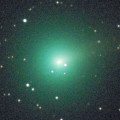
|
It brightened up to 7.4 mag from December to January (Dec. 24, Osamu Miyazaki). Now it is 8.7 mag (Feb. 4, Osamu Miyazaki). It will fade out rapidly after this. It stays observable in good condition.
Date(TT) R.A. (2000) Decl. Delta r Elong. m1 Best Time(A, h)
Feb. 10 12 41.25 9 46.7 0.504 1.383 133 8.7 3:24 ( 0, 65)
Feb. 17 12 42.50 9 49.6 0.511 1.417 139 9.1 2:58 ( 0, 65)
|

|
Now it is 9.9 mag (Feb. 2, Ken-ichi Kadota). Fading slowly. In the Northern Hemisphere, it will be getting higher gradually. In the Southern Hemisphere, it will be getting lower gradually after this, and it will be unobservable in May.
Date(TT) R.A. (2000) Decl. Delta r Elong. m1 Best Time(A, h)
Feb. 10 17 9.68 -20 58.3 1.454 1.322 62 9.2 5:26 (322, 24)
Feb. 17 17 31.81 -16 4.5 1.399 1.321 64 9.2 5:20 (319, 28)
|

|
Now it is 10.5 mag (Feb. 8, Osamu Miyazaki). It will fade out rapidly after this. It stays observable in good condition.
Date(TT) R.A. (2000) Decl. Delta r Elong. m1 Best Time(A, h)
Feb. 10 4 33.36 16 19.6 0.740 1.410 108 10.1 19:15 ( 0, 71)
Feb. 17 4 53.96 16 47.8 0.779 1.422 106 10.1 19:09 ( 0, 72)
|

|
Now it is 12.4 mag (Feb. 4, Osamu Miyazaki). It stays 13 mag for a while. In the Northern Hemisphere, it stays observable in good condition. In the Southern Hemisphere, it will be getting lower gradually after this, and it will be unobservable in June.
Date(TT) R.A. (2000) Decl. Delta r Elong. m1 Best Time(A, h)
Feb. 10 8 5.50 22 9.3 3.210 4.143 158 12.4 22:45 ( 0, 77)
Feb. 17 7 53.41 23 39.2 3.242 4.115 148 12.4 22:05 ( 0, 79)
|
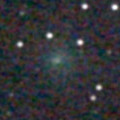
|
Now it is 13.3 mag (Dec. 16, Michael Mattiazzo). Fading rapidly. It will be fainter than 18 mag in April. In the Northern Hemisphere, it is not observable now, but it will be observable soon. In the Southern Hemisphere, it will be getting higher gradually.
Date(TT) R.A. (2000) Decl. Delta r Elong. m1 Best Time(A, h)
Feb. 10 20 7.90 -33 55.7 1.683 0.919 26 12.5 5:26 (303,-13)
Feb. 17 19 57.40 -32 44.1 1.620 0.979 34 13.3 5:20 (306, -7)
|

|
First return of a new periodic comet which brightened up to 10 mag in 2001. It is expected to brighten up to 12-13 mag from February to March. Now it is 15.3 mag (Jan. 29, Ken-ichi Kadota). It will fade out rapidly after this. It locates somewhat low in the Northern Hemisphere. In the Southern Hemisphere, it will never be observable after this. Thomas Lehmann reported it was bright as 12.5 mag on Feb. 4.
Date(TT) R.A. (2000) Decl. Delta r Elong. m1 Best Time(A, h)
Feb. 10 23 52.46 19 36.5 1.862 1.422 48 13.2 19:02 ( 95, 30)
Feb. 17 0 2.32 23 39.6 1.886 1.411 47 12.8 19:08 (102, 27)
|
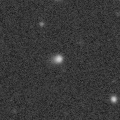
|
It will approach to Sun down to 0.4 a.u. in late September, and it is expected to brighten up to 0 mag. Now it is 13.6 mag (Feb. 5, Thomas Lehmann). It will brighten rapidly after this. It stays observable in good condition. At the high light, in the Northern Hemisphere, it will be observable in good condition after the perihelion passage. In the Southern Hemisphere, it will be observable in the low sky before and after the perihelion passage.
Date(TT) R.A. (2000) Decl. Delta r Elong. m1 Best Time(A, h)
Feb. 10 15 10.99 -7 51.6 3.608 3.787 92 13.1 5:26 (350, 47)
Feb. 17 15 10.25 -7 45.2 3.402 3.704 100 12.8 5:20 (358, 47)
|

|
It was observed at 9-10 mag for a long time in 2023. Now it is 12.6 mag (Feb. 2, Chris Wyatt). It stays 14 mag for a while. In the Northern Hemisphere, it will never be observable after this. It locates somewhat low in the Southern Hemisphere. But it will become high in spring.
Date(TT) R.A. (2000) Decl. Delta r Elong. m1 Best Time(A, h)
Feb. 10 23 32.39 -39 36.9 4.499 3.751 36 13.0 19:02 ( 48,-10)
Feb. 17 23 36.56 -39 29.1 4.578 3.807 34 13.1 19:08 ( 52,-14)
|
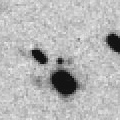
|
Now it is 13.2 mag (Feb. 1, Thomas Lehmann). It will fade out rapidly after this. It will be fainter than 18 mag in May. It stays observable in good condition. Vladimir Bezugly reported it is visible at around 12 mag in the SOHO LASCO images in late January.
Date(TT) R.A. (2000) Decl. Delta r Elong. m1 Best Time(A, h)
Feb. 10 2 40.35 -16 57.0 0.315 0.949 73 13.3 19:02 ( 28, 33)
Feb. 17 3 24.64 -17 4.3 0.274 0.971 78 13.1 19:08 ( 25, 34)
|

|
Now it is 14.0 mag (Feb. 2, Ken-ichi Kadota). It stays 13 mag for a while. It locates somewhat low in the Northern Hemisphere. In the Southern Hemisphere, it stays observable in good condition. It is expected to brighten up to 12.5 mag in spring. At the high light, it will be observable in excellent condition in the Southern Hemisphere, but it will be low in the Northern Hemisphere.
Date(TT) R.A. (2000) Decl. Delta r Elong. m1 Best Time(A, h)
Feb. 10 15 18.76 -26 44.1 2.594 2.713 86 13.3 5:26 (351, 28)
Feb. 17 15 10.64 -28 39.9 2.444 2.705 94 13.2 5:20 (358, 26)
|

|
It brightened up to 8 mag from 2022 summer to 2023 spring. Now it is 13.1 mag (Feb. 4, Osamu Miyazaki). Fading slowly. It will be getting lower gradually after this, and it will be unobservable in May in the Northern Hemisphere, or in June in the Southern Hemisphere.
Date(TT) R.A. (2000) Decl. Delta r Elong. m1 Best Time(A, h)
Feb. 10 5 9.81 3 2.7 4.473 4.965 114 13.4 19:50 ( 0, 58)
Feb. 17 5 7.80 4 3.6 4.636 5.026 107 13.5 19:21 ( 0, 59)
|

|
Now it is 12.4 mag (Feb. 2, Chris Wyatt). It stays observable in good condition.
Date(TT) R.A. (2000) Decl. Delta r Elong. m1 Best Time(A, h)
Feb. 10 8 15.92 21 22.4 5.236 6.177 160 13.5 22:56 ( 0, 76)
Feb. 17 8 12.84 21 26.2 5.281 6.179 153 13.5 22:25 ( 0, 76)
|

|
It approached to Earth down to 0.38 a.u., and brightened up to 8.0 mag in autumn (Sept. 29, Virgilio Gonano). Now it is 14.7 mag (Feb. 2, Chris Wyatt). It will fade out rapidly after this. It will be fainter than 18 mag in May. It stays observable in good condition.
Date(TT) R.A. (2000) Decl. Delta r Elong. m1 Best Time(A, h)
Feb. 10 8 4.30 -7 55.3 0.939 1.854 148 13.6 22:44 ( 0, 47)
Feb. 17 8 1.06 -6 8.8 1.019 1.916 145 14.0 22:13 ( 0, 49)
|

|
Now it is 13.9 mag (Feb. 2, Chris Wyatt). Fading slowly. In the Northern Hemisphere, it will be unobservable in May. In the Southern Hemisphere, it stays observable in good condition.
Date(TT) R.A. (2000) Decl. Delta r Elong. m1 Best Time(A, h)
Feb. 10 8 47.84 -45 49.5 4.026 4.582 118 13.7 23:26 ( 0, 9)
Feb. 17 8 33.58 -45 31.2 4.058 4.619 119 13.8 22:45 ( 0, 9)
|
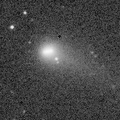
|
Now it is 14.5 mag (Feb. 1, Chris Wyatt). It stays 14 mag for a while. In the Northern Hemisphere, it stays observable in good condition. It locates somewhat low in the Southern Hemisphere. But it will become high in winter.
Date(TT) R.A. (2000) Decl. Delta r Elong. m1 Best Time(A, h)
Feb. 10 3 12.35 22 55.9 1.852 2.121 91 13.9 19:02 ( 56, 71)
Feb. 17 3 22.29 23 49.9 1.911 2.103 86 13.9 19:08 ( 67, 67)
|

|
It returned for the first time in 68 years. It will brighten up to 7.5 mag in summer. Now it is 13.6 mag (Feb. 2, Alan Hale). It will brighten rapidly after this. In the Northern Hemisphere, it will be getting lower gradually. In the Southern Hemisphere, it will be getting lower gradually after this, and it will be unobservable in April. At the high light, it locates low in the Northern Hemisphere, or it is not observable in the Southern Hemisphere.
Date(TT) R.A. (2000) Decl. Delta r Elong. m1 Best Time(A, h)
Feb. 10 2 53.59 -2 53.1 2.252 2.299 80 14.2 19:02 ( 33, 47)
Feb. 17 2 56.44 -0 27.3 2.271 2.225 74 13.9 19:08 ( 44, 45)
|

|
Now it is 14.3 mag (Feb. 5, Thomas Lehmann). It stays 14 mag for a while. It locates somewhat low in the Northern Hemisphere. In the Southern Hemisphere, it stays observable in good condition.
Date(TT) R.A. (2000) Decl. Delta r Elong. m1 Best Time(A, h)
Feb. 10 12 14.62 -38 53.5 4.759 5.242 114 14.1 2:58 ( 0, 16)
Feb. 17 12 13.74 -38 53.0 4.663 5.226 119 14.0 2:30 ( 0, 16)
|

|
It brightened up to 7.8 mag in late July (July 20, Thomas Lehmann). Now it is 15.3 mag (Feb. 5, Thomas Lehmann). Fading gradually. It stays observable in good condition.
Date(TT) R.A. (2000) Decl. Delta r Elong. m1 Best Time(A, h)
Feb. 10 14 56.04 2 33.9 2.597 2.921 99 14.2 5:26 (354, 57)
Feb. 17 14 47.73 4 33.9 2.530 2.991 108 14.3 5:03 ( 0, 59)
|

|
It brightened up to 8.3 mag in 2021-2022 winter (Jan. 6, 2022, Toshiyuki Takahashi). Now it is 15.7 mag (Jan. 31, ATLAS Chile). It stays 15 mag for a while. In the Northern Hemisphere, it will be unobservable in May. In the Southern Hemisphere, it stays observable in good condition.
Date(TT) R.A. (2000) Decl. Delta r Elong. m1 Best Time(A, h)
Feb. 10 11 16.72 -53 24.7 6.918 7.288 108 14.4 2:00 ( 0, 1)
Feb. 17 11 12.78 -53 45.8 6.905 7.333 112 14.4 1:29 ( 0, 1)
|

|
Now it is 15.1 mag (Jan. 23, Ken-ichi Kadota). Fading rapidly. It will be fainter than 18 mag soon. It locates somewhat low.
Date(TT) R.A. (2000) Decl. Delta r Elong. m1 Best Time(A, h)
Feb. 10 19 6.35 -11 34.4 1.907 1.241 35 15.1 5:26 (294, 12)
Feb. 17 19 29.22 -9 39.0 1.934 1.286 36 16.2 5:20 (292, 13)
|

|
It brightened up to 12.1 mag in 2023 spring (May 20, Jose Guilherme de S. Aguiar). Now it is 14.7 mag (Feb. 2, Chris Wyatt). Fading slowly. In the Northern Hemisphere, it is not observable now. In the Southern Hemisphere, it stays observable in good condition.
Date(TT) R.A. (2000) Decl. Delta r Elong. m1 Best Time(A, h)
Feb. 10 3 51.62 -69 35.4 4.143 4.054 78 15.1 19:02 ( 3,-15)
Feb. 17 3 56.60 -67 4.0 4.178 4.096 78 15.2 19:08 ( 6,-12)
|
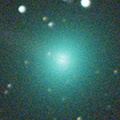
|
It approached to Earth down to 0.2 a.u. in early November, and brightened up to 6.2 mag (Nov. 11, Marco Goiato). Now it is 14.4 mag (Feb. 5, Thomas Lehmann). Fading gradually. It will be fainter than 18 mag in May. In the Northern Hemisphere, it will never be observable after this. It locates somewhat low in the Southern Hemisphere.
Date(TT) R.A. (2000) Decl. Delta r Elong. m1 Best Time(A, h)
Feb. 10 23 59.45 -43 30.9 2.533 1.928 42 15.1 19:02 ( 42, -8)
Feb. 17 0 8.65 -43 43.7 2.640 2.017 41 15.4 19:08 ( 45,-12)
|

|
First return of a new periodic comet which was discovered in 2011, half a year after the perihelion passage. It is expected to brighten up to 14 mag in spring. Now it is 15.4 mag (Feb. 4, Ken-ichi Kadota). Brightening slowly. It stays observable in good condition.
Date(TT) R.A. (2000) Decl. Delta r Elong. m1 Best Time(A, h)
Feb. 10 8 11.66 8 34.1 0.711 1.672 159 15.5 22:51 ( 0, 63)
Feb. 17 8 1.78 6 37.1 0.680 1.615 150 15.2 22:14 ( 0, 61)
|
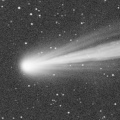
|
It approached to Sun down to 0.23 a.u. and brightened up to 2.5 mag in mid September (Sept. 18, Juan Jose Gonzalez). Now it is 17.0 mag (Jan. 28, Jean-Claude Merlin). It will fade out rapidly after this. It will be fainter than 18 mag in May. In the Northern Hemisphere, it is not observable now, but it will be observable soon. In the Southern Hemisphere, it stays observable in good condition. Thomas Lehmann reported it was bright as 14.1 mag on Feb. 4.
Date(TT) R.A. (2000) Decl. Delta r Elong. m1 Best Time(A, h)
Feb. 10 9 54.01 -56 42.4 2.345 2.817 108 15.3 0:39 ( 0, -2)
Feb. 17 9 29.63 -55 22.2 2.394 2.912 112 15.5 23:40 ( 0, 0)
|
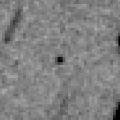
|
Now it is 15.4 mag (Jan. 31, ATLAS-MLO, Mauna Loa). It will fade out rapidly after this. It will be fainter than 18 mag in May. In the Northern Hemisphere, it stays observable in good condition. It locates somewhat low in the Southern Hemisphere. But it will become high in spring.
Date(TT) R.A. (2000) Decl. Delta r Elong. m1 Best Time(A, h)
Feb. 10 7 24.70 38 56.9 0.746 1.645 143 15.4 22:05 (180, 86)
Feb. 17 7 26.46 38 18.8 0.766 1.636 137 15.4 21:40 (180, 87)
|
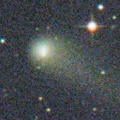
|
It brightened up to 11.1 mag in early 2022 (Mar. 31, 2022, F. Kugel, J.-G. Bosch, J. Nicolas). Now it is 15.1 mag (Jan. 20, Thomas Lehmann). It stays 16 mag for a while. In the Northern Hemisphere, it stays observable in good condition. It locates somewhat low in the Southern Hemisphere.
Date(TT) R.A. (2000) Decl. Delta r Elong. m1 Best Time(A, h)
Feb. 10 17 29.77 20 9.9 6.748 6.457 68 15.5 5:26 (281, 51)
Feb. 17 17 33.64 20 56.5 6.715 6.497 73 15.5 5:20 (283, 54)
|

|
It is expected to brighten up to 12 mag in early summer. Now it is 15.5 mag (Feb. 7, Thomas Lehmann). It will brighten rapidly after this. It locates somewhat low in the Northern Hemisphere. In the Southern Hemisphere, it will be getting lower gradually after this, and it will be unobservable in April. At the high light, it is not observable in the Southern Hemisphere, or it locates low in the Northern Hemisphere.
Date(TT) R.A. (2000) Decl. Delta r Elong. m1 Best Time(A, h)
Feb. 10 2 3.40 -16 12.7 2.219 2.017 65 15.7 19:02 ( 39, 30)
Feb. 17 2 6.35 -12 26.9 2.226 1.937 60 15.5 19:08 ( 48, 28)
|
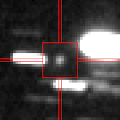
|
It is expected to brighten up to 12.5 mag in summer. Now it is 15.8 mag (Feb. 7, Thomas Lehmann). Brightening gradually. In the Northern Hemisphere, it is not observable now. In the Southern Hemisphere, it stays observable in good condition. Around the high light, it is observable in good condition in the Southern Hemisphere, but it locates very low in the Northern Hemisphere.
Date(TT) R.A. (2000) Decl. Delta r Elong. m1 Best Time(A, h)
Feb. 10 15 28.01 -66 11.3 3.906 3.806 76 15.8 5:26 (355,-12)
Feb. 17 15 40.89 -67 24.0 3.790 3.753 80 15.6 5:20 (356,-13)
|

|
Now it is 15.6 mag (Jan. 11, Toshihiko Ikemura, Hirohisa Sato). It stays 16 mag for a while. It will be getting lower gradually after this, and it will be unobservable in May in the Northern Hemisphere, or in June in the Southern Hemisphere.
Date(TT) R.A. (2000) Decl. Delta r Elong. m1 Best Time(A, h)
Feb. 10 4 28.50 -8 23.1 6.619 6.884 101 15.8 19:09 ( 0, 47)
Feb. 17 4 28.97 -7 41.0 6.686 6.855 95 15.8 19:08 ( 9, 47)
|
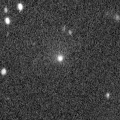
|
Very large comet. It is expected to brighten up to 13 mag in 2031. Now it is 16.6 mag (Jan. 23, ATLAS Chile). It stays 16 mag for a while. In the Northern Hemisphere, it is not observable now. In the Southern Hemisphere, it stays observable in good condition. In the Northern Hemisphere, it is not observable until 2030.
Date(TT) R.A. (2000) Decl. Delta r Elong. m1 Best Time(A, h)
Feb. 10 2 52.69 -63 47.8 16.978 16.709 72 15.9 19:02 ( 10,-10)
Feb. 17 2 53.73 -63 29.0 16.968 16.685 71 15.9 19:08 ( 13,-11)
|

|
Now it is 15.4 mag (Jan. 15, Toshihiko Ikemura, Hirohisa Sato). It will fade out rapidly after this. It will be fainter than 18 mag in April. In the Northern Hemisphere, it will be getting lower gradually. In the Southern Hemisphere, it will be unobservable in March.
Date(TT) R.A. (2000) Decl. Delta r Elong. m1 Best Time(A, h)
Feb. 10 1 36.30 12 36.2 1.975 1.823 66 15.9 19:02 ( 70, 47)
Feb. 17 1 46.90 15 45.2 2.062 1.839 63 16.1 19:08 ( 78, 44)
|
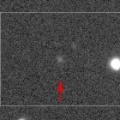
|
It will be observable at 15-16 mag from 2024 to 2025. Now it is 17.3 mag (Jan. 24, ATLAS South Africa). It stays 16 mag for a while. It stays observable in good condition.
Date(TT) R.A. (2000) Decl. Delta r Elong. m1 Best Time(A, h)
Feb. 10 13 19.40 1 42.8 3.054 3.676 122 16.1 4:03 ( 0, 57)
Feb. 17 13 19.17 1 55.3 2.954 3.660 129 16.0 3:35 ( 0, 57)
|
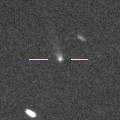
|
Now it is 16.0 mag (Jan. 1, Ken-ichi Kadota). It stays 16 mag for a while. In the Northern Hemisphere, it will be unobservable in March. In the Southern Hemisphere, it will be getting lower gradually. But it will be getting higher again after May. The brightness evolution is slower than originally expected.
Date(TT) R.A. (2000) Decl. Delta r Elong. m1 Best Time(A, h)
Feb. 10 1 43.07 -30 41.2 3.593 3.207 59 16.1 19:02 ( 34, 15)
Feb. 17 1 45.86 -30 42.4 3.628 3.172 55 16.1 19:08 ( 40, 11)
|
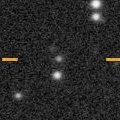
|
Now it is 16.1 mag (Jan. 29, ATLAS Chile). Fading slowly. It will be fainter than 18 mag in May. It stays observable in good condition.
Date(TT) R.A. (2000) Decl. Delta r Elong. m1 Best Time(A, h)
Feb. 10 8 50.72 -13 57.8 0.849 1.772 149 16.3 23:30 ( 0, 41)
Feb. 17 8 45.34 -15 10.7 0.849 1.762 147 16.3 22:57 ( 0, 40)
|

|
It is expected to brighten up to 15.5 mag from March to April. Now it is 16.9 mag (Jan. 27, ATLAS-HKO, Haleakala). Brightening slowly. It locates somewhat low in the Northern Hemisphere. But it will become high in spring. In the Southern Hemisphere, it stays observable in good condition.
Date(TT) R.A. (2000) Decl. Delta r Elong. m1 Best Time(A, h)
Feb. 10 17 11.46 -14 32.3 1.732 1.549 62 16.7 5:26 (318, 29)
Feb. 17 17 33.61 -14 29.8 1.684 1.539 64 16.4 5:20 (318, 29)
|

|
It brightened up to 13 mag in early 2023. It stays 17 mag for a while. It stays extremely low in the Northern Hemisphere. In the Southern Hemisphere, it stays observable in good condition.
Date(TT) R.A. (2000) Decl. Delta r Elong. m1 Best Time(A, h)
Feb. 10 16 30.72 -48 1.6 4.026 3.790 69 16.4 5:26 (342, 3)
Feb. 17 16 33.90 -47 57.4 3.986 3.850 74 16.4 5:20 (345, 5)
|
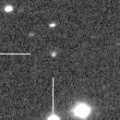
|
Now it is 16.9 mag (Jan. 20, ATLAS Chile). It stays 16 mag for a while. It locates somewhat low in the Northern Hemisphere. But it will become high in summer. In the Southern Hemisphere, it stays observable in good condition.
Date(TT) R.A. (2000) Decl. Delta r Elong. m1 Best Time(A, h)
Feb. 10 14 2.95 -28 23.7 3.111 3.446 101 16.5 4:46 ( 0, 26)
Feb. 17 14 7.21 -28 38.9 3.019 3.445 107 16.5 4:23 ( 0, 26)
|
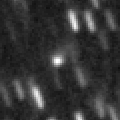
|
It stays 16 mag in the Southern sky for a long time from 2024 to 2025. It stays 16 mag for a while. It stays extremely low in the Northern Hemisphere. In the Southern Hemisphere, it stays observable in good condition.
Date(TT) R.A. (2000) Decl. Delta r Elong. m1 Best Time(A, h)
Feb. 10 16 55.42 -45 16.7 6.195 5.844 64 16.6 5:26 (337, 4)
Feb. 17 16 54.75 -45 57.9 6.059 5.821 71 16.6 5:20 (341, 5)
|

|
Now it is 16.5 mag (Jan. 31, Thomas Lehmann). It will fade out rapidly after this. It will be fainter than 18 mag in April. In the Northern Hemisphere, it will be getting lower gradually. In the Southern Hemisphere, it will be unobservable in March.
Date(TT) R.A. (2000) Decl. Delta r Elong. m1 Best Time(A, h)
Feb. 10 0 56.20 9 59.3 2.561 2.177 56 16.7 19:02 ( 75, 38)
Feb. 17 1 10.56 11 16.4 2.637 2.193 53 16.8 19:08 ( 79, 34)
|

|
Now it is 17.0 mag (Jan. 9, Toshihiko Ikemura, Hirohisa Sato). It stays 17 mag for a while. It will be unobservable in May.
Date(TT) R.A. (2000) Decl. Delta r Elong. m1 Best Time(A, h)
Feb. 10 4 35.16 29 44.2 4.567 5.005 110 16.8 19:16 ( 0, 85)
Feb. 17 4 36.82 29 6.7 4.656 4.991 104 16.8 19:08 ( 33, 83)
|
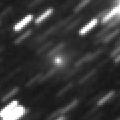
|
Very far object. Now it is 17.0 mag (Jan. 27, ATLAS Chile). It stays 17 mag for a while. In the Northern Hemisphere, it is not observable now. In the Southern Hemisphere, it stays observable in good condition.
Date(TT) R.A. (2000) Decl. Delta r Elong. m1 Best Time(A, h)
Feb. 10 2 12.17 -70 4.9 10.627 10.323 69 16.8 19:02 ( 11,-18)
Feb. 17 2 11.94 -69 15.9 10.635 10.325 69 16.8 19:08 ( 14,-18)
|
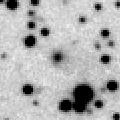
|
Now it is 16.8 mag (Jan. 29, D. Buczynski). It stays 17 mag for a while. In the Northern Hemisphere, it stays observable in good condition. In the Southern Hemisphere, it will be unobservable in April.
Date(TT) R.A. (2000) Decl. Delta r Elong. m1 Best Time(A, h)
Feb. 10 4 32.49 40 13.9 6.276 6.694 111 17.0 19:14 (180, 85)
Feb. 17 4 33.81 40 1.0 6.379 6.696 104 17.0 19:08 (143, 84)
|
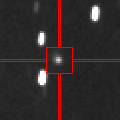
|
Now it is 16.5 mag (Jan. 25, ATLAS Chile). It stays 17 mag for a while. In the Northern Hemisphere, it will be unobservable in April. In the Southern Hemisphere, it stays observable in good condition.
Date(TT) R.A. (2000) Decl. Delta r Elong. m1 Best Time(A, h)
Feb. 10 4 45.74 -36 35.5 7.398 7.558 95 17.0 19:26 ( 0, 19)
Feb. 17 4 46.21 -35 45.3 7.433 7.536 92 17.0 19:08 ( 2, 19)
|
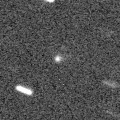
|
Now it is 17.3 mag (Jan. 15, ATLAS-HKO, Haleakala). Brightening slowly. It will be unobservable in May.
Date(TT) R.A. (2000) Decl. Delta r Elong. m1 Best Time(A, h)
Feb. 10 1 56.86 4 37.7 2.620 2.439 68 17.1 19:02 ( 56, 45)
Feb. 17 2 5.50 5 46.0 2.667 2.403 63 17.1 19:08 ( 63, 42)
|
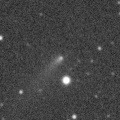
|
It brightened very rapidly up to 14.9 mag in early summer (July 13, Taras Prystavski). Now it is 17.2 mag (Jan. 16, Ken-ichi Kadota). Fading gradually. It will be fainter than 18 mag in April. In the Northern Hemisphere, it stays observable in good condition. In the Southern Hemisphere, it will be getting lower gradually.
Date(TT) R.A. (2000) Decl. Delta r Elong. m1 Best Time(A, h)
Feb. 10 14 53.22 13 27.6 2.343 2.730 102 17.1 5:26 (353, 68)
Feb. 17 14 46.12 17 11.3 2.275 2.782 110 17.1 5:02 ( 0, 72)
|

|
Now it is 17.5 mag (Jan. 29, D. Buczynski). It stays 18 mag for a while. It stays observable in good condition.
Date(TT) R.A. (2000) Decl. Delta r Elong. m1 Best Time(A, h)
Feb. 10 6 46.68 19 9.0 1.609 2.452 140 17.3 21:27 ( 0, 74)
Feb. 17 6 45.54 19 57.1 1.658 2.443 133 17.3 20:59 ( 0, 75)
|
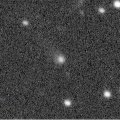
|
Now it is 17.6 mag (Jan. 22, Jean-Claude Merlin). It stays 18 mag for a while. In the Northern Hemisphere, it will never be observable after this. In the Southern Hemisphere, it stays observable in good condition.
Date(TT) R.A. (2000) Decl. Delta r Elong. m1 Best Time(A, h)
Feb. 10 5 31.39 -71 34.2 3.850 3.890 84 17.3 20:09 ( 0,-16)
Feb. 17 5 8.56 -70 26.6 3.886 3.910 84 17.4 19:19 ( 0,-15)
|

|
Now it is 17.3 mag (Jan. 30, ATLAS Chile). It stays 17 mag for a while. It stays observable in good condition.
Date(TT) R.A. (2000) Decl. Delta r Elong. m1 Best Time(A, h)
Feb. 10 7 51.86 -9 27.5 3.868 4.714 145 17.4 22:32 ( 0, 45)
Feb. 17 7 48.89 -9 17.5 3.865 4.676 141 17.3 22:01 ( 0, 46)
|

|
Now it is 17.7 mag (Jan. 11, Ken-ichi Kadota). It stays 17 mag for a while. It locates somewhat low in the Northern Hemisphere. In the Southern Hemisphere, it stays observable in good condition.
Date(TT) R.A. (2000) Decl. Delta r Elong. m1 Best Time(A, h)
Feb. 10 15 34.28 -27 47.9 3.157 3.183 82 17.5 5:26 (347, 26)
Feb. 17 15 41.02 -28 15.7 3.056 3.178 87 17.5 5:20 (351, 26)
|
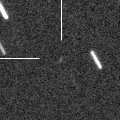
|
Now it is 17.0 mag (Jan. 27, ATLAS South Africa). Fading gradually. It will be fainter than 18 mag in March. It locates somewhat low in the Northern Hemisphere. In the Southern Hemisphere, it stays observable in good condition.
Date(TT) R.A. (2000) Decl. Delta r Elong. m1 Best Time(A, h)
Feb. 10 9 5.77 -35 14.5 1.606 2.362 129 17.5 23:43 ( 0, 20)
Feb. 17 8 37.21 -36 9.9 1.665 2.401 127 17.6 22:47 ( 0, 19)
|
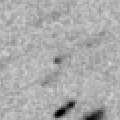
|
Now it is 17.4 mag (Jan. 10, ATLAS Chile). It will fade out rapidly after this. It will be fainter than 18 mag in March. It stays observable in good condition.
Date(TT) R.A. (2000) Decl. Delta r Elong. m1 Best Time(A, h)
Feb. 10 12 16.39 2 28.4 1.311 2.144 137 17.5 3:00 ( 0, 57)
Feb. 17 12 14.97 2 2.4 1.268 2.152 144 17.5 2:31 ( 0, 57)
|
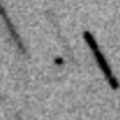
|
Now it is 18.0 mag (Jan. 29, Ken-ichi Kadota). It will brighten rapidly after this. It will be getting lower gradually after this, and it will be unobservable in April in the Northern Hemisphere, or in June in the Southern Hemisphere. It will brighten up to 11 mag in summer. But it is not observable at the high light.
Date(TT) R.A. (2000) Decl. Delta r Elong. m1 Best Time(A, h)
Feb. 10 2 18.48 -7 17.3 3.097 2.922 70 17.6 19:02 ( 40, 39)
Feb. 17 2 22.83 -6 36.5 3.107 2.839 65 17.5 19:08 ( 48, 35)
|

|
Now it is 17.7 mag (Jan. 31, ATLAS-HKO, Haleakala). It stays 17 mag for a while. It stays observable in good condition.
Date(TT) R.A. (2000) Decl. Delta r Elong. m1 Best Time(A, h)
Feb. 10 10 54.65 3 24.5 5.007 5.925 156 17.6 1:38 ( 0, 58)
Feb. 17 10 50.47 4 32.8 4.929 5.889 165 17.5 1:07 ( 0, 59)
|
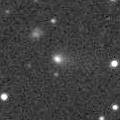
|
Now it is 16.7 mag (Jan. 30, ATLAS Chile). Fading slowly. It will be fainter than 18 mag in March. In the Northern Hemisphere, it will be getting lower gradually. It locates somewhat low in the Southern Hemisphere.
Date(TT) R.A. (2000) Decl. Delta r Elong. m1 Best Time(A, h)
Feb. 10 3 28.98 8 20.7 3.147 3.324 91 17.5 19:02 ( 27, 61)
Feb. 17 3 33.78 9 2.1 3.262 3.341 85 17.7 19:08 ( 40, 58)
|
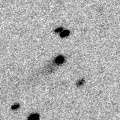
|
Now it is 17.3 mag (Jan. 20, ATLAS-HKO, Haleakala). It stays 18 mag for a while. It stays observable in good condition.
Date(TT) R.A. (2000) Decl. Delta r Elong. m1 Best Time(A, h)
Feb. 10 12 17.26 17 15.8 8.643 9.421 140 17.5 3:01 ( 0, 72)
Feb. 17 12 13.57 17 50.5 8.591 9.435 147 17.5 2:30 ( 0, 73)
|

|
It brightened up to 14.1 mag in 2022 spring (Mar. 22, 2022, Chris Wyatt). Now it is 17.2 mag (Jan. 13, ATLAS-MLO, Mauna Loa). It stays 18 mag for a while. It will be unobservable in March.
Date(TT) R.A. (2000) Decl. Delta r Elong. m1 Best Time(A, h)
Feb. 10 1 17.83 4 3.5 6.667 6.220 59 17.6 19:02 ( 65, 38)
Feb. 17 1 19.19 4 41.2 6.818 6.268 52 17.7 19:08 ( 72, 32)
|

|
It approached to Earth down to 0.29 a.u. in early last February, and it brightened up to 4.5 mag (Feb. 1, Juan Jose Gonzalez). Now it is 17.7 mag (Feb. 7, Thomas Lehmann). Fading slowly. It will be fainter than 18 mag in March. In the Northern Hemisphere, it will never be observable after this. In the Southern Hemisphere, it stays observable in good condition.
Date(TT) R.A. (2000) Decl. Delta r Elong. m1 Best Time(A, h)
Feb. 10 3 0.59 -54 28.8 5.215 5.028 73 17.6 19:02 ( 12, -1)
Feb. 17 2 59.96 -53 21.1 5.323 5.095 71 17.7 19:08 ( 17, -2)
|

|
Now it is 17.8 mag (Jan. 19, ATLAS Chile). It stays 17 mag for a while. In the Northern Hemisphere, it is not observable now, but it will appear in March. In the Southern Hemisphere, it stays observable in good condition. It stays 15 mag for a long time from late 2024 to early 2026.
Date(TT) R.A. (2000) Decl. Delta r Elong. m1 Best Time(A, h)
Feb. 10 6 15.86 -60 28.5 5.476 5.654 95 17.7 20:55 ( 0, -5)
Feb. 17 6 10.43 -58 57.2 5.437 5.614 95 17.7 20:22 ( 0, -4)
|

|
Now it is 17.3 mag (Jan. 22, ATLAS-HKO, Haleakala). Fading gradually. It will be fainter than 18 mag soon. In the Northern Hemisphere, it stays observable in good condition. In the Southern Hemisphere, it will never be observable after this.
Date(TT) R.A. (2000) Decl. Delta r Elong. m1 Best Time(A, h)
Feb. 10 3 54.06 65 54.5 1.586 2.082 105 17.7 19:02 (175, 59)
Feb. 17 4 23.59 62 28.1 1.641 2.108 103 17.8 19:08 (173, 62)
|
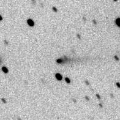
|
Now it is 17.2 mag (Jan. 19, ATLAS-HKO, Haleakala). Fading slowly. It will be fainter than 18 mag soon. It stays observable in good condition.
Date(TT) R.A. (2000) Decl. Delta r Elong. m1 Best Time(A, h)
Feb. 10 8 26.46 -2 50.7 3.191 4.113 156 17.9 23:06 ( 0, 52)
Feb. 17 8 22.91 -2 12.8 3.229 4.128 152 18.0 22:35 ( 0, 53)
|
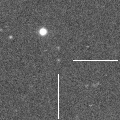
|
Far asteroid moving along a cometary orbit. It brightens up to 18 mag from 2024 to 2025. It stays 18 mag for a while. In the Northern Hemisphere, it stays observable in good condition. It stays extremely low in the Southern Hemisphere.
Date(TT) R.A. (2000) Decl. Delta r Elong. m1 Best Time(A, h)
Feb. 10 8 15.89 50 42.5 7.987 8.775 140 17.9 22:56 (180, 74)
Feb. 17 8 8.89 50 26.9 8.036 8.771 135 17.9 22:22 (180, 75)
|
|
![]()
 C/2020 K1 ( PanSTARRS )
C/2020 K1 ( PanSTARRS ) C/2023 H2 ( Lemmon )
C/2023 H2 ( Lemmon ) P/2023 WM26 ( Elenin )
P/2023 WM26 ( Elenin ) C/2023 P1 ( Nishimura )
C/2023 P1 ( Nishimura ) 227P/Catalina-LINEAR
227P/Catalina-LINEAR C/2019 T4 ( ATLAS )
C/2019 T4 ( ATLAS ) C/2023 V4 ( Camarasa-Duszanowicz )
C/2023 V4 ( Camarasa-Duszanowicz ) C/2023 C2 ( ATLAS )
C/2023 C2 ( ATLAS ) C/2022 QE78 ( ATLAS )
C/2022 QE78 ( ATLAS ) C/2014 UN271 ( Bernardinelli-Bernstein )
C/2014 UN271 ( Bernardinelli-Bernstein ) 226P/Pigott-LINEAR-Kowalski
226P/Pigott-LINEAR-Kowalski 65P/Gunn
65P/Gunn C/2022 S4 ( Lemmon )
C/2022 S4 ( Lemmon ) 150P/LONEOS
150P/LONEOS 125P/Spacewatch
125P/Spacewatch C/2021 Y1 ( ATLAS )
C/2021 Y1 ( ATLAS ) C/2022 T1 ( Lemmon )
C/2022 T1 ( Lemmon ) C/2023 F3 ( ATLAS )
C/2023 F3 ( ATLAS ) 471P/2023 KF3
471P/2023 KF3 C/2022 U3 ( Bok )
C/2022 U3 ( Bok ) C/2019 E3 ( ATLAS )
C/2019 E3 ( ATLAS ) C/2021 S4 ( Tsuchinshan )
C/2021 S4 ( Tsuchinshan ) C/2022 R6 ( PanSTARRS )
C/2022 R6 ( PanSTARRS ) 30P/Reinmuth 1
30P/Reinmuth 1 C/2023 K1 ( ATLAS )
C/2023 K1 ( ATLAS ) P/2023 Y3 ( ATLAS )
P/2023 Y3 ( ATLAS ) C/2022 A3 ( Lemmon-ATLAS )
C/2022 A3 ( Lemmon-ATLAS ) C/2023 T3 ( Fuls )
C/2023 T3 ( Fuls ) 299P/Catalina-PanSTARRS
299P/Catalina-PanSTARRS C/2022 V2 ( Lemmon )
C/2022 V2 ( Lemmon ) 216P/LINEAR
216P/LINEAR C/2023 R2 ( PanSTARRS )
C/2023 R2 ( PanSTARRS ) C/2023 H5 ( Lemmon )
C/2023 H5 ( Lemmon ) 170P/Christensen
170P/Christensen C/2020 F2 ( ATLAS )
C/2020 F2 ( ATLAS ) C/2020 Y2 ( ATLAS )
C/2020 Y2 ( ATLAS ) C/2022 E3 ( ZTF )
C/2022 E3 ( ZTF ) C/2024 A1 ( ATLAS )
C/2024 A1 ( ATLAS ) C/2023 T2 ( Borisov )
C/2023 T2 ( Borisov ) 408P/2020 M7 ( Novichonok-Gerke )
408P/2020 M7 ( Novichonok-Gerke ) (468861) 2013 LU28
(468861) 2013 LU28![]()
























































